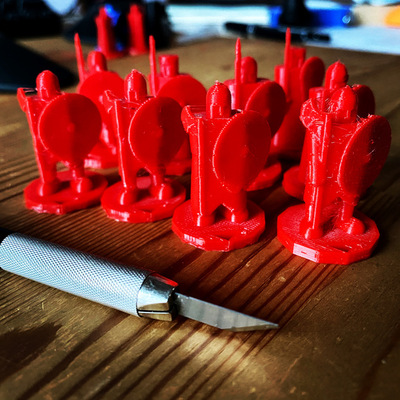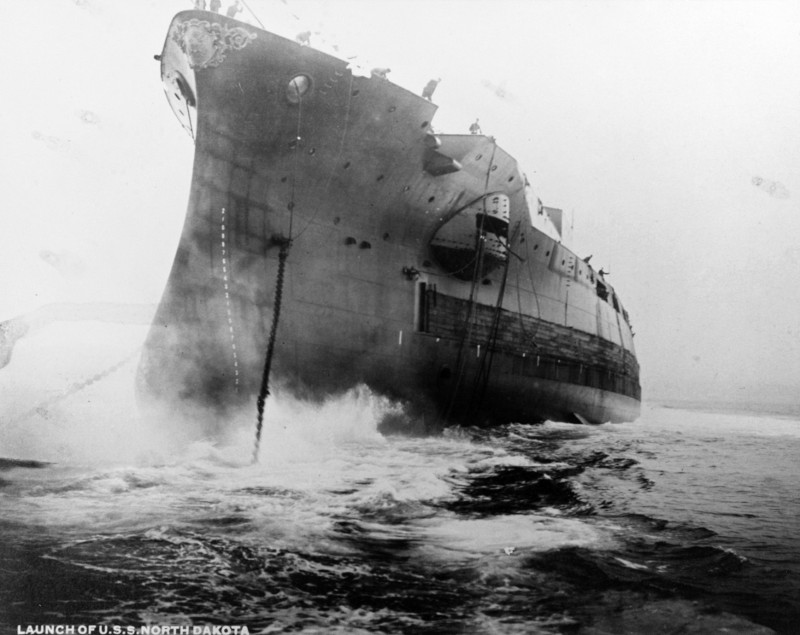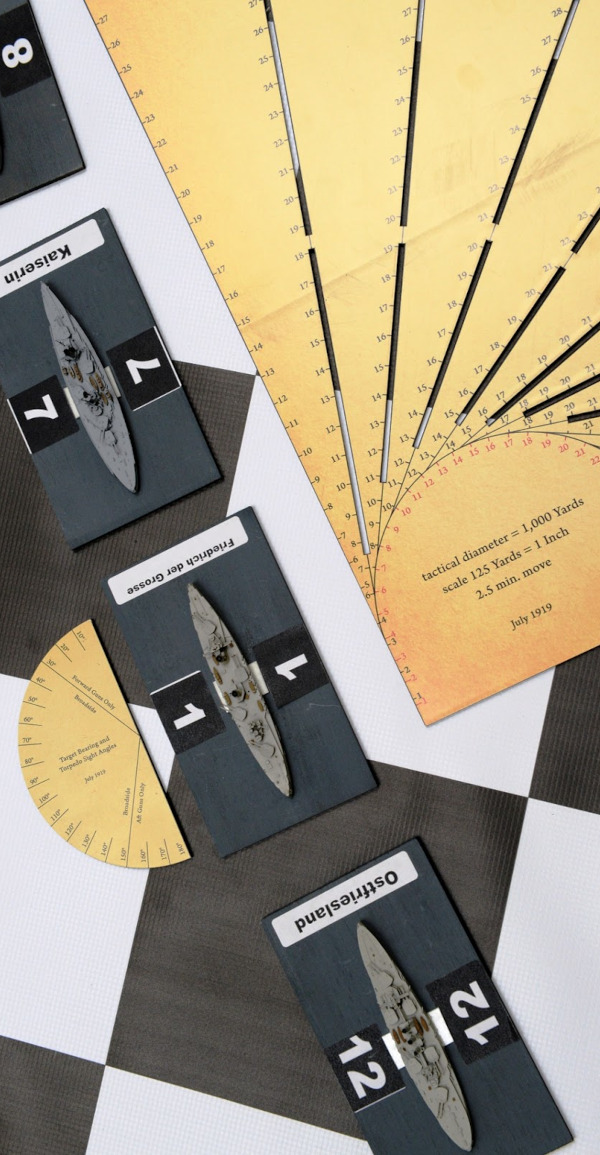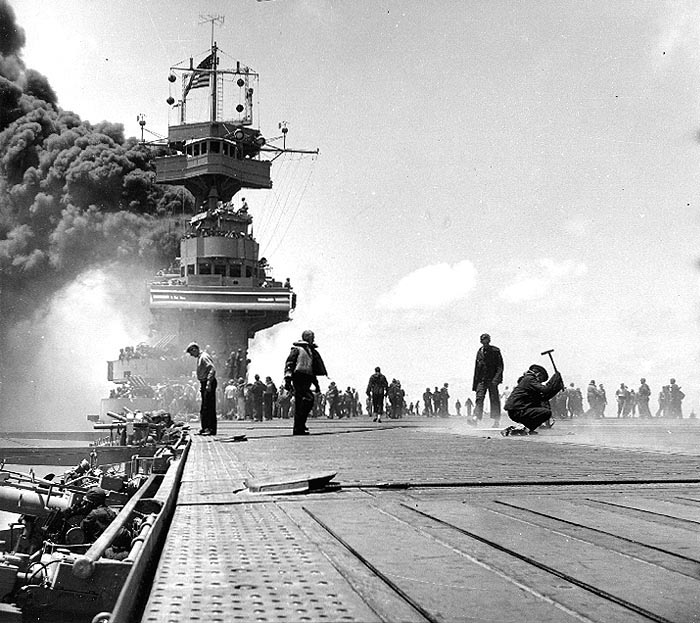
|
Pacific Wargaming |
| 2021-08-07 |
Pacific Wargaming
This is a translation of Jeux de guerre et victoire dans le Pacifique (July 2021) by retired Colonel Michel Goya. I am grateful for his kind authorization to translate and publish here.

In January 1908, an article in the McClure's Magazine, signed by several US Navy officers strongly criticized the design of the Delaware-class battleship whose second ship, the North Dakota, was under construction.
They pointed on the design and its flaws, criticizing the Navy's Bureau of Construction and Repair conceiving it without ever consulting operational naval officers. The controversy reached President Theodore Roosevelt, passionate about warfare questions, who, following the advice of Admiral Williams Sims, turned to the Naval War College in Newport as they regularly practiced (and still practice) wargames for the training of Navy officers. The President asked for an evaluation of the North Dakota. The clear-cut outcome of the game confirmed the very negative critique of the operational officers. The Delaware-class stopped there and it was acknowledged that huge savings could have been done had the concepts been tested before being put into production.
Distrusting Congress, US armed forces had no Joint Chiefs of Staff, only a Joint Board with limited authority. The Naval Secretary was assisted by division commanders, among them the operations and material division. There was also a general bureau of senior admirals, acting as advisors to the Secretary. It's an easy guess, the department was quickly torn in rivalries between those organizations, further amplified by the inter-war context of cost reduction and strong constraints imposed by naval treaties. It was not an easy task in those conditions to drive the evolution of an organization, even though it was guessed that it would have to prevail in gigantic fights in the medium term. The US Navy would succeed in a remarkable way and wargames would have a lot to do with it.
The NCW was then attached to the Operations Division, the future Chiev Naval Operation - OPNAV, where it was first used as a reflection and experimentation tool, a kind of think tank. It was an organizational revolution, as the personal judgement of chief got completed by tests as rational as possible, much like what happened in medical science at approximately the same time. From now on, all the plans conceived by OPNAV, then, all the issues encountered by the US Navy, like for example the effects of naval treaties, would be scrutinized through experimentation. This experimentation would take the form of life-size exercises, irreplaceable but rare, costly, and strongly constrained security-wise, and also wargames on the floor of the Naval War College in Newport, with miniature ships and dice. Americans were not the only ones to practice with lifesize exercises and with wargames, the japanese naval officers in particular played heavily, but the US officers played systematically, and they especially played complete campaigns.

From 1919 to 1941, there were 136 games played, simulating complete campaigns, almost all in the Pacific against Japan. Those campaigns comprised the one month long campaign played by each NWC promotion. There were also 182 "one shots" (games simulating a single battle). The same cycle is followed for each of those games: the students receive an order triggering the redaction of an operational order. Those orders are then analyzed and criticized, one of them being chosen to be played in double action, ending with a detailed analysis of the ensuing combats.
Formation benefits were huge. The officers coming out of the Naval War College mastered the use of the available forces and particularly new forces. For example, Admiral Raymond Spruance would go on masterfully using aircraft carriers without ever serving in the naval aviation or commanding a carrier. The graduates knew quite well their adversaries, as their ships had been represented precisely, and they knew the geographic aspects of the zones they were to operate in.
Despite the attack on Pearl Harbor or the setbacks of the Solomons campaign, the quality of the US naval operations during the Pacific War, it is easy to forget that the US Navy had not fought surface battle since 1898. The US Naval officers were the least experienced officers among all the naval forces at that point in time. Admiral Nimitz, who commanded the US Pacific Fleet from December 17 1941 to the end of the war, would explain that this lack of experience was compensated by simulation and that, ultimately, everything that had happened had already been played in Newport, with the exception of kamikaze tactics. His explanation forgot the submarine campaign against the japanese merchant navy that had never been played, at least not at the "total" level it reached.
It was also through gaming that the campaign plan against Japan, War Plan Orange, got constantly refined. The very Mahanian initial idea was to destroy the japanese fleet near the Philippines, under american administration at that point and then to choke Japan by blockade. It was in that context that the use of aircraft carriers was tested, even though their numbers was small. The games shew that the carriers were able to strike land targets efficiently and to destroy anything at sea except for battleships. The Navy concluded that there was a need for a balanced fleet combining battleships and aircraft carriers for the fights on the high seas, whereas the Japanese, divided, would use two types of separate task forces, aircraft carriers at first then battleships from 1944. The Royal Navy would subordinate their carriers, smaller than the US and japanese ones, to their ships of the line.
But a balanced american fleet where the Japanese invested massively in aircraft carriers supposed to accept a numerical inferiority, and indeed the Americans would start the war with 8 carriers against the 10 japanese carriers. The feeback from the first fights on the Newport NWC floor stressed the need for palliative solutions, like the constructions of anti-aircraft destroyers, the quick conversion of merchant ships into small aircraft carriers (the Atlantic escort carriers), and the optimized use of space in future carriers so that they may carry more aircrafts than the japanese ones did.
Campaign games helped determine that aircraft carriers had to be repaired and reengaged more quickly than the adversary ones. During the Coral Sea Battle in May 1942, the Shōkaku, the Zuikaku, and the Yorktown were damaged. A month later, at Midway, the japanese carriers were still under repair while the Yorktown is deployed.

Tactical and strategical consequences were huge. Campaign games also frigthened the Americans by showing pilot attrition rates, hence the Navy early on explored the question of rescue at sea on one hand and ways to train big numbers of pilots on the other hand, whereas the Japanese, who only simulated battles, did nothing. The games evidenced as well the utmost importance of detecting enemy forces before being detected and highlighted the need to invest in a long range reconnaissance capability, based on maritime aircraft patrols and long range submarines.
A particularly important wargame was played in the summer of 1933. It took into account the fortification by the Japanese of the Pacific German Islands and their seizing of Guam. The game was a disaster, the US fleet, as foreseen by the japanese plan, found itself harassed by submarines and airplanes operating from the island-bases. Worn out and without effective support from its distant bases, the US could not prevail against the japanese in the Philippine Sea. It was concluded that seizing those islands and turning them into advanced bases was to be done early on. It was also reflected in the resource strategy, that to overcome what was not yet called access denial, the Marines and the Navy developped a specific fleet of ships and amphibious vehicles, and usage doctrines for them. They were the only ones in the world to do it at that point, and even though it was envisioned initially only for islands in the Pacific, this major development allowed the assault on the Atlantic wall.
Not everything was perfect in this game driven evolution process. In the 1930s, the game rules were so sophisticated that they reached 150 pages, that excluded any appropriation by the students and imposed the creation of a bureau specifically devoted to the wargame. Although based on the most precise data possible, the rules were of course approximate on new phenomena such as the use of naval aviation in combat, even though it was realized they were nevertheless the best anticipations on the matter.
In fact, it was above all the geopolitical events that put the simulations at fault. Total submarine warfare was not simulated, primarily for fear of offending the United Kingdom, whose merchant ships would undoubtedly be the first victims in the Pacific. The sudden fall of France in 1940 was not foreseen, disrupting the planning, and shifting a non-negligible part of the US naval effort from Pacific to Atlantic.
The miniature ships of Newport, the shooting and resolution tables, the dice, constituted the most successful transformation engine among modern navies. To test ideas and concepts, that is, as in science, to see if they resist refutation, is more effective than the rough judgment of an authority or the tendency to do the same thing again, but with a bigger budget.
Further readings:
- Wargaming in Professional Military Education: A Student's Perspective
- Playing War: Wargaming and U.S. Navy Preparations for World War II
Previous translations of Colonel Goya's articles:
